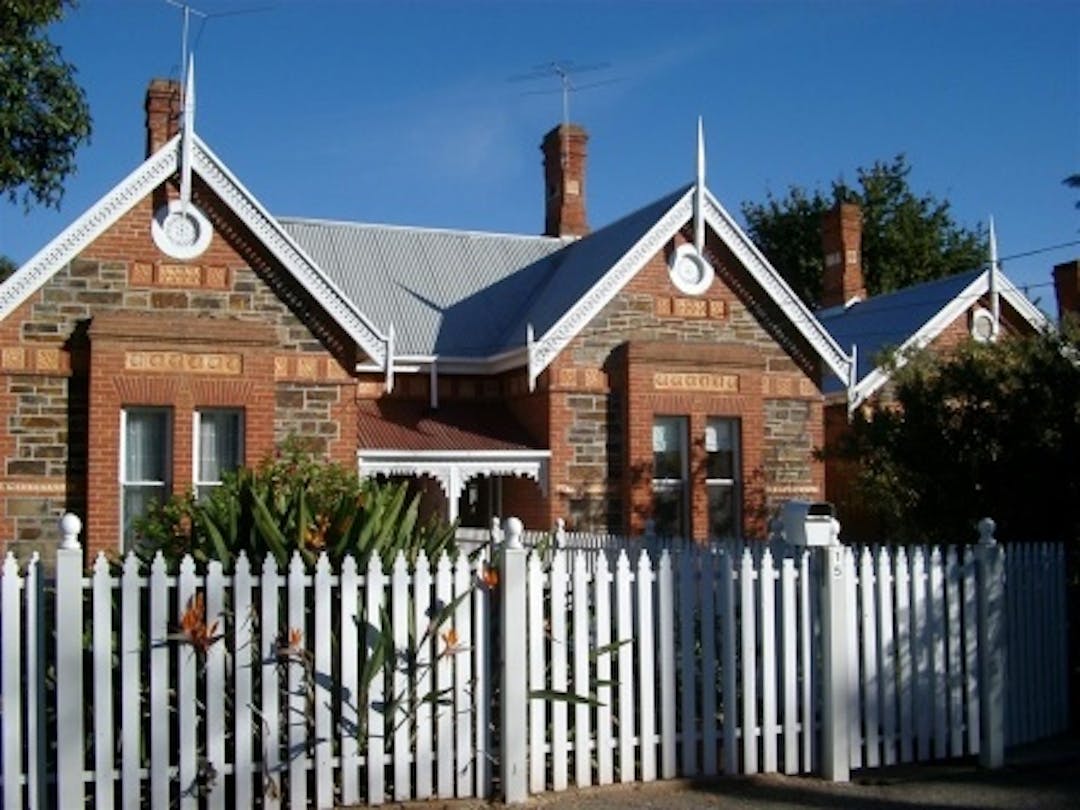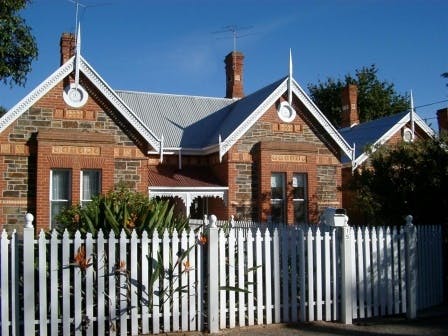State Planning Reforms
Consultation has concluded

SA's planning system is changing on 19 March 2021
South Australia’s new planning system for large regional towns and metropolitan areas will launch on 19 March, allowing development applications to be submitted and tracked online via Australia’s first state wide ePlanning platform.
The ePlanning platform will bring together the PlanSA portal, the online Planning and Design Code, the South Australian Property and Planning Atlas and the electronic Development Application Processing system.
The new planning system will deliver clear and consistent planning policies across the entire state of South Australia that are easily accessible and widely available.
For more information and to preview the online Planning and Design Code for metro areas visit Plan SA
A frequently asked questions (FAQ) and other fact sheets can be found in the document library above.
Past engagement: the City of Burnside's community engagement on the Planning Reforms
The proposed new planning system could change our City’s landscape and impact the residential character of your street or suburb, potentially affecting your general sense of community.
Get involved
READ the information
WATCH the online forum (see Key Dates on the right)
ASK questions (at the forum - or attend a PlanSA forum with details below)
MAKE a submission (use the template in the Document Library on the right)
Planning Reforms Presentation - 9 December 2020
City of Burnside recently held a Planning Reforms Presentation (which can be viewed above) on 9 December 2020.
Residents were encouraged to submit questions online and were answered by our staff panelists.
The question and answer transcript from the session can be found in the document library.
Second Planning Reform Consultation
The State Government conducted a public consultation on a new draft Planning and Design Code from October 2019 to February 2020.
The City of Burnside made a submission as part of this consultation and encouraged our community to make submissions as well.
Over 2000 submissions were received by the State Government and in response, the State Planning Commission has released a final revised draft of the Planning and Design Code– Phase 3. This Code will facilitate significant changes to your neighbourhood.
Now is your last chance to have your say before these changes are implemented.
The revised draft includes some positive changes to the version released late last year. These include:
- The identification of Contributory Items in Historic Areas.
- A more appropriate new zone for our existing Local Centres.
- A new zone called the Established Neighbourhood Zone for some of our older areas, as well as the areas in the existing Historic Conservation Zone.
- Extent of the General Neighbourhood Zone has been reduced.
CONCERNS
While the State Government has indicated that the intent of the new draft Planning Code is similar, it is not identical to what Burnside currently has in place. The proposed new Code will change our City’s landscape and facilitate a change to the residential character of your street or suburb, ultimately affecting your general sense of community.
Council is still very concerned about several significant issues that remain in the revised draft of the Code.
1. Proposed Zoning of Residential Areas
With concern for potential impacts to local character and our valued heritage, Council previously proposed a Development Plan Amendment to list the City of Burnside’s existing Historic Conservation Policy Areas as nine ‘Local Heritage Places’ in the Local Heritage Place Overlay. The Commission did not endorse this request. In addition, Council requested that the Character Area Overlay be applied to some of our older areas. This would have provided these areas with policy closer to our current conditions. The Commission has not endorsed the Character Area Overlay anywhere in our council..
The revised draft Code places much of the City of Burnside’s residential areas in the Suburban Neighbourhood Zone.
MAP 1: Overview of revised residential zones in draft Planning and Design Code
This zone emphasises quantitative criteria such as the height of new buildings, how far a building is set back from the boundary, and the area of a property can be covered by a buildings, rather than design compatibility to ensure that new dwellings are consistent with the locality’s character.
The proposed policy in the Suburban Neighbourhood Zone is largely inconsistent and incompatible with the zone policy currently in place in Burnside. It places less emphasis on the established character of these areas and is likely to result in substantially poorer design outcomes.
New Established Neighbourhood Zone
The new Established Neighbourhood Zone contains policy outcomes which more closely resemble that which currently exists for our City, particularly in relation to the envisaged pattern of development, site coverage, setbacks and dwelling design.

Although the State Government has endorsed several areas of our council to be included in the Established Neighbourhood Zone, we believe that the following areas should also be included in this zone:
- Linden Park
- Erindale
- Frewville
- Hazelwood Park
- Rosslyn Park
- Glenside
- Glenunga
- Leabrook (part)
- Kensington Park (part)
- Kensington Gardens (part)
- Burnside (part)
- Toorak Gardens (part).
2. Setbacks from Boundaries
Under the new Code, the current requirements for setbacks for development from side and rear boundaries will be substantially reduced, particularly for two-storey development. This will severely impact the amenity of individual dwellings and the streetscapes, particularly in relation to access to privacy, sunlight, overshadowing and the space in and around buildings.
We believe that the existing setback criteria should be maintained in all residential areas and in particular, all two storey development should continue to be setback at least 4 m from the side boundary and 8 m from the rear boundary of residential properties.
3. Building on the Boundary
The revised draft Code allows for development on the boundary up to 11.5 m in length. This is a substantial increase from the current maximum of 8 m and will result in increased overshadowing and loss of amenity.
4. Garage Dominance
The Code will allow garages to be a more dominant visual feature of houses when viewed from the street.
5. Commercial Development in Residential Areas
Currently, shops, offices and educational establishments are non-complying with current planning policy in our council’s residential areas. In the new Code existing residential areas will allow these non-residential uses which will adversely impact traffic, parking, noise, neighbour’s amenity and the character of our suburbs.
6. Historic Areas
The Code proposes to rename Contributory Items as ‘Representative Buildings’. This term is potentially misleading. It infers that current Contributory Items are only of ‘representative’ , historic style rather than each being of individual historic value as a significant member of the historic collective group, irrespective of their form or design. We suggest using the term ‘Contributory Building’ or ‘Nominated Building’.
The proposed demolition criteria wording is ambiguous and could facilitate the loss of Burnside’s valued heritage.
7. Public Notification
Currently you are notified if your neighbour plans to build a new 2-storey development, replace their house with two or more dwellings, or change it to a non-residential use. Under the new Code you will not be notified or have any opportunity to comment on these types of developments.
8. Tree Canopy and Climate Resilience
The draft Code facilitates larger developments, the easier removal of trees on both private and public land, increased infill development opportunities, increased number of street crossovers, and reductions in minimum site areas, site coverage and setbacks. This will result in a significant reduction in canopy cover and climate resilience, along with habitat loss.
We believe that the requirement to plant a reasonably sized tree as part of a proposed development should not be circumvented by paying money into a tree fund as this would allow the erosion of tree canopy in that specific location. Requirements for minimum tree planting size and ongoing maintenance should be written into both Code policy and conditions of approval.
9. Private Assessment of Development
Each of the design and land use issues raised above are critical given the increased role of private planning consultants in the decision-making process. Under the new Code, private assessors will be able to make ‘judgement’ calls where a proposed development deviates from certain the Code criteria or where it involves the interpretation of minor variations. Council believes this particular decision making capacity should not rest with private assessors who are engaged by the applicant, rather than a body such as Council who makes a decision independently of the applicant.
COUNCIL URGES YOU TO HAVE YOUR SAY
This is the last chance you will have to comment on the draft Planning and Design Code.
If any of these issues also concern you, Council encourages you to make a submission to the State Planning Commission by Friday 18 December 2020.
Find out more about the revised draft Planning and Design Code on the Plan SA website. Click the drop down menu (see the example image below for the location of this drop down menu as circled in red):
- for a summary of the changes made to the draft Code following the first public consultation (Oct 19 - Feb 20).
- to explore the revised Code.
- to access the Code Feedback Tool to lodge your submission.
HOW TO COMMENT ON THE REVISED CODE
Either lodge your submission online to: Code Feedback Tool
OR alternatively,
Submit feedback via email to: DIT.planningreformsubmissions@sa.gov.au
EXAMPLE SUBMISSION LETTER
Council realises that this topic can be quite complex and technical. An example letter is provided in the Document Library at the top of this page as a guide for your own submission.
NEED MORE INFORMATION?
If you have any questions, call the PlanSA Service Desk on 1800 752 664.
To attend in-person or online events regarding the Code, please visit PlanSA events
Click here to view Frequently Asked Questions
Background on the first Planning and Design Code Reform Consultation
To read about the first public consultation on the draft Planning and Design Code from October 2019 to February 2020, and Council's response, see the 'Background on the first Planning and Design Code Reform Consultation' document in the Document Library above.






